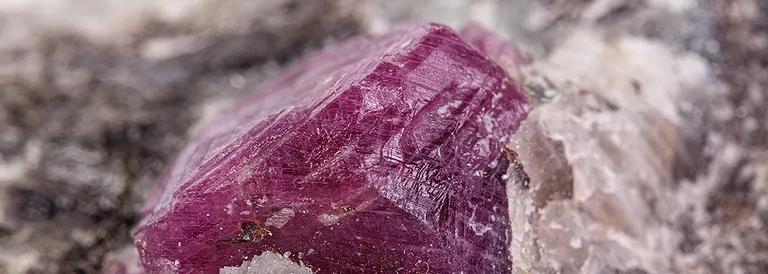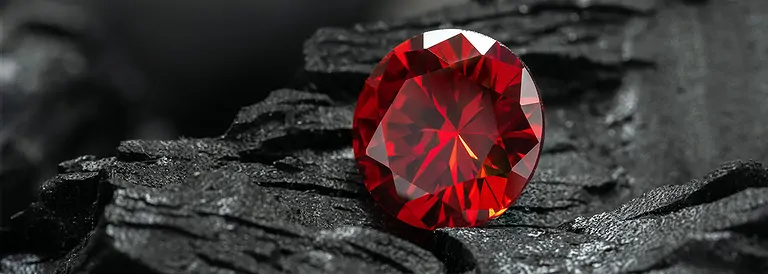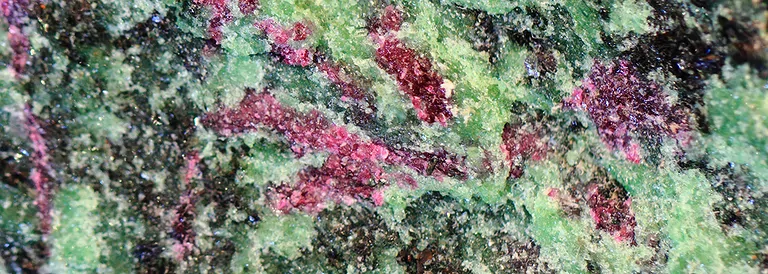
Ruby - Meaning, effect and application
Ruby is one of the four classic “precious stones”: diamond, ruby, sapphire and emerald. There used to be a division into precious and semi-precious stones. All other gemstones, except the four mentioned above, fell under the category of “semi-precious stones”. This classification was abolished a few decades ago.
Mineralogical profile of ruby
Chemical formula: Al2O3
Mineral class: oxide, corundum family
Formation: as magmatic precipitation or as a result of contact or regional metamorphism in gneisses, crystalline schists and granular limestones as well as on gemstone soap deposits (from weathering and river transport of the above rocks)
Color: reddish brown to pigeon blood red
Luster: silky luster
Crystal system: trigonal
Mohs hardness: 9
Cleavage, fracture: no cleavage, small-muscled, splintery fracture
Occurrence, main supplier countries: Burma, Thailand, Sri Lanka, India, Tanzania, Kenya
Appearance: rolled grains and crystals from rivers or as barrel-shaped (prismatic) crystals with a six-sided cross-section
Use: Ruby is a traditional gemstone that is still one of the most popular gemstones for jewelry. It is used in gemstone healing to strengthen vitality, passion, bravery, virtue and courage. Astrology assigns it to Aries on the basis of these
to Aries due to the properties mentioned.
Availability: rare

Drilled gemstones, stringed beads and more ruby items at wholesale prices
Origin of the name ruby and synonyms
The name ruby first appeared in France (Provence) in the 12th century and comes from the Latin word ruber = red. In the Middle Ages, the stone was still called “carbuncle”, but this was a collective term for various red stones such as garnet, spinel and ruby. Ruby red is a very special color whose typical characteristic is a low blue content, similar to the color of heavy, fine red wine, i.e. with a slight violet tinge. The most sought-after shade of ruby is called “pigeon's blood”; these stones have a slightly higher purple content.
Ruby history and myths
Many stories and myths have grown up around the ruby.Aristotle (384-322 BC) wrote: “One (of the corundums) is red like the purest blood and is called Rubinus.This is the best of all”. Ruby has always been a stone of princes, rulers and high dignitaries. If a particularly splendid ruby was found in the Orient, it was given a veritable state reception on its way to its new owner.Rubies were said to have many healing properties.In the Middle Ages, for example, it was worn as a protective stone against the plague and it was believed that the ruby darkened when disaster was approaching.
Ruby is always a special highlight in royal crowns, sceptres, necklaces and rings. The large red stone on the front of the English royal crown was long thought to be a ruby until it was discovered by modern means of gemstone testing that it was in fact a red spinel, which is also a precious stone but does not have the rarity and value of a ruby.
The color of ruby
Ruby gets its characteristic color from the addition of chromium. Depending on the amount of chromium, it can range from a soft pink-red ruby to a dark red ruby. If iron is also present in addition to chromium, the ruby takes on a red-brown color.
Strong red ruby with a slight blue tinge is considered the most sought-after ruby and is known as pigeon's blood ruby. Other well-known color names for rubies are cochineal red, incarnate, carnation red, ponceau red and vermeil.
Jewelry with ruby for jewellers and retailers

Application of ruby
In gemstone healing, ruby is regarded as a stone of vitality and zest for life.It supports vitality, promotes drive, bravery, virtue and courage, i.e. the truly royal attributes.On the other hand, the stone helps to balance too much activity.In terms of the yin-yang philosophy of traditional Chinese medicine, ruby promotes the masculine-active yang qualities.You don't need a very expensive, transparent stone to experience the effects of ruby.Many inexpensive opaque rubies with beautiful colors are available on the market in the form of rough stones, tumbled stones, pendants, necklaces and bracelets.Ruby should be worn with skin contact directly on the body. It is particularly powerful when placed on the pubic bone.
Ruby for chakras and astrology
Ruby is a stone for the first chakra, the root chakra. However, due to its blue color, it also has a connection to the sixth chakra, the brow chakra. Astrologically, it matches the sign of Aries, whose intuition and regenerative power it is said to strengthen.
In Vedic astrology, the Jyotish, each planet is assigned a gemstone; here the ruby stands for the sun and solar qualities.

Ruby and zoisite
A very attractive combination of red ruby and green zoisite originates from Tanzania.